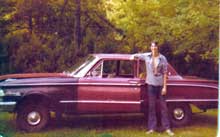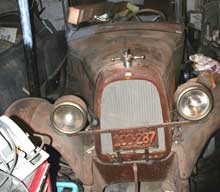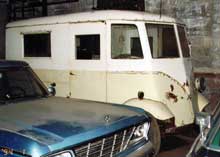The Tale of the Comet
About three years ago I told the story of my first car, a 1937 Ford convertible sedan. It's been a while since the subject came up, but recently Dennis David, the CarPort's western Connecticut scout, sent me a photo of his first car, a 1963 Mercury Comet.
The Comet, of course, was basically a stretched Ford Falcon with fins. Introduced in March 1960, its prices started at $1,998, just $86.00 above Falcon. First season sales, while not approaching its cousin's 435,676, were a respectable 116,331 units, particularly considering the mid-model year start. Moreover, the new "companion" model pumped up Mercury's overall sales by 80 percent.
Body styles were the same as Falcon's, a two-door sedan, a four-door sedan, a two-door station wagon and a four-door wagon. The wagons,which used all Falcon sheet metal from the cowl back, were devoid of fins. (These are all 1961 models, which received a new grille.) Engine choices were taken from Falcon, the basic 144 cid six and its larger 170 cid brother. The instrument panel, too, drew from the Falcon parts bin.
Nineteen-sixty-two brought yet another new grille, and a cleaner-looking rear end with taillights moved from the fins to the fenders. Wagons, too, got new taillights. The big news, however, was the S-22, a dressed-up two-door with bucket seats.
For 1963, Comet, like Falcon, gained a convertible, then, at mid-year, the new fastback hardtop and a 260 cid V8. In 1964, there was new sheet metal, a top-line Caliente series and an available 210 hp 289 V8, christened "Cyclone." A 200 cid six became the base engine in 1965, when the Cyclone was boosted up to 225 bhp.
Thus ended the first generation Comet, since the 1966 models were based on the 116-inch-wheelbase Fairlane. Comet sales had remained fairly steady between 135,000 and 193,000, significantly adding to Mercury's bottom line.
Dennis's Comet rode a bit high in the front, because the engine was an optional extra. He finally did get it running, unlike my Ford, which lacked some vital parts. Neither of us, though, ever put his first car on the road.
Do you have some pix of your first car? Send them to the CarPort.



